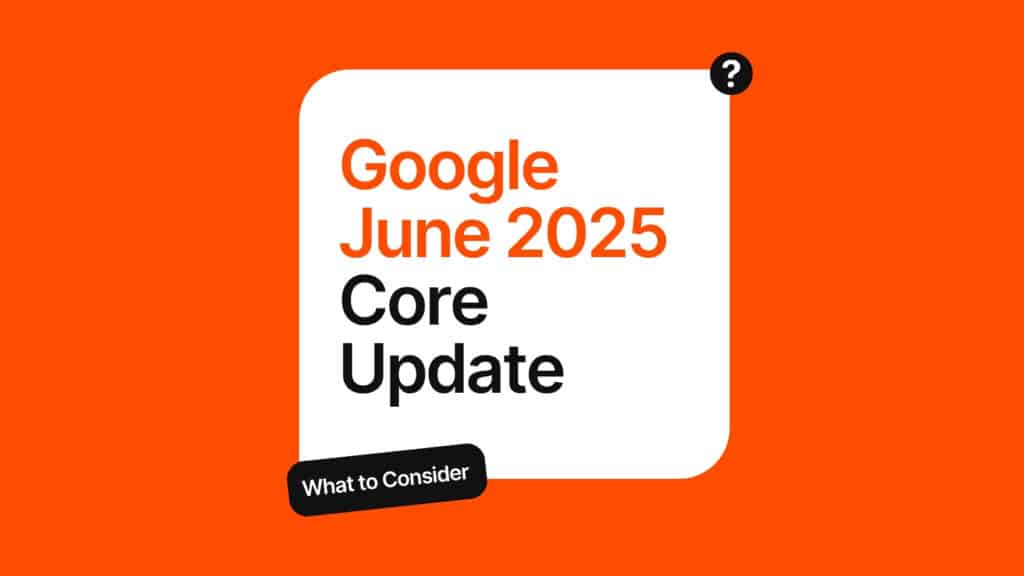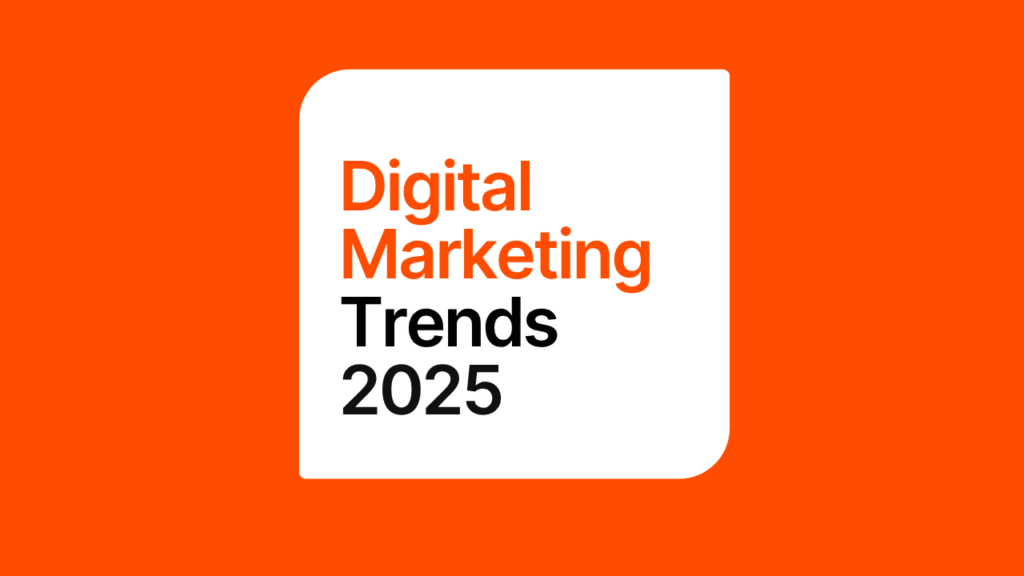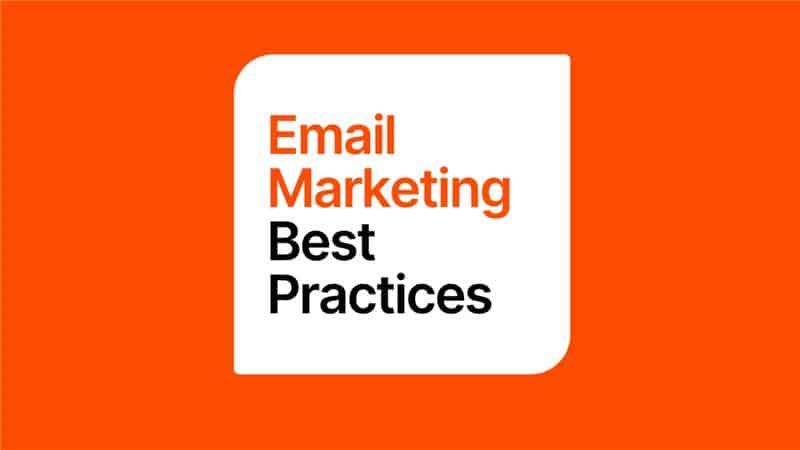Increase your website traffic?

Written by: Benjamin Paine
Managing Director at Digital Nomads HQ
Why trust Digital Nomads HQ?
Digital Nomads HQ is continually recognised as a leading agency & industry "thought-leader" in the digital marketing segment. Known for our expert insight, industry data, and new innovative finding within the Digital Marketing industry. Our agency is frequently cited as a trusted source of credible marketing information, demonstrating the value and impact of our work in shaping industry standards and practices.

EDM Marketing: Introduction
The benchmark for where you meet customers has moved, and if you don’t move with it (altering your marketing strategy), you’ll for sure get left behind. We’re in a time where we constantly have to explore alternative marketing avenues. So, even though you’ve probably never heard of Electronic Direct Mail (EDM) marketing, you’re not alone.
Even though this might not be the most popular marketing strategy, the return on investment (ROI) from email marketing compared to other digital marketing channels keeps on demanding our attention. That said, you can expect a thorough explanation of what EDM marketing is, how it compares to old-school email marketing strategies, and a step-by-step guide on how to build your EDM marketing campaign so we can grow your business together.

What Is EDM Marketing?
Electronic Direct Mail (EDM) marketing is a digital marketing strategy businesses use to promote their products and services to existing and potential customers (who have opted in). The main goal of EDM marketing is to build nurturing, long-lasting relationships with current customers and potential leads by keeping readers engaged and informed and eventually driving them toward a specific action.
This goal could include anything from making a purchase, attending an event (in-person/ webinar), or subscribing to a service. An EDM marketing strategy uses various formats, including:
- Email campaigns;
- Social media;
- SMS;
- Printed materials and
- Out-of-home (OOH) advertising.
Ready to convert qualified leads into loyal customers? As a performance-driven digital marketing agency, we utilise data-driven strategies to analyse customer behaviour to create hyper-personalised email campaigns.
EDM Marketing vs Traditional Email Marketing

Even though you’re probably no stranger to old-school email marketing strategies, we are going to highlight what they are and the distinct characteristics and goals of each. Even if you want to build an EDM campaign, understanding the difference will help you if you decide to take a more holistic approach by combining strategies.
Personalization and Targeting
EDM marketing focuses on delivering highly personalised email content based on data-driven insights. It involves segmenting audiences by interests, behaviours, or demographics and tailoring marketing messages to these specific groups. This personalised approach enhances relevance and engagement.
On the other hand, a traditional email strategy also uses segmentation but tends to create more general messages, aiming to reach a larger audience without losing impact. The goal is to appeal to as many recipients as possible, often sacrificing some personalisation for broader reach.
Content Strategy
EDM marketing revolves around creating content that strengthens a connection with email recipients. This might include storytelling, exclusive offers, or insights that resonate emotionally or provide added value to the audience.
Conversely, traditional email marketing is more transactional, often focused on promoting offers, sharing updates, or informing about product recommendations and services, aiming for mass appeal.
Metrics and Measurements
The success of an EDM campaign is measured by long-term metrics such as engagement rates, customer retention, and lifetime value. These metrics evaluate how well the campaign builds lasting relationships with the target audience. Traditional email marketing typically focuses on short-term metrics like open rates, click-through rates, and conversion rates, aiming to drive immediate sales or actions.
Strategy Complexity
A key distinction lies in the broader scope of EDM marketing. While traditional email marketing is limited to sending emails through a third-party provider, EDM campaigns extend far beyond. As mentioned, they often include follow-up retargeting ads, social media efforts, and offline advertising like billboards or print ads. Each element reinforces the message from the initial marketing email, creating multiple brand touchpoints.
This aligns with the “Rule of Seven,” which suggests an individual customer needs to encounter a brand at least seven times before taking action. EDM marketing leverages this principle by integrating email with other marketing channels, helping to nurture leads and convert prospects into loyal customers.
Benefits of EDM Marketing
1. Saves Time & Reduces Costs
Both EDM and traditional email marketing are highly cost-effective. Once you’ve built your email list, you can reach your audience cheaply using scheduled campaigns. EDM marketing allows businesses to create visually appealing emails using email templates or in-house design teams, which is far less expensive than producing traditional printed mailers.
Additionally, it saves time by keeping the entire process in-house—there’s no need to rely on printers or mailing services. This efficiency allows businesses to focus on delivering personalised messages quickly and consistently.
2. Builds Trust & Boosts Conversions
One of EDM marketing’s biggest strengths is its ability to foster trust – Since it targets a list of customers who have opted in to receive communications, you know your audience is already interested in your brand.
This level of permission-based marketing increases engagement and helps build stronger customer relationships. Studies have shown that trust is a crucial factor in consumer loyalty, and EDM marketing allows you to maintain this trust by delivering timely and relevant content. As trust grows, so do conversions, turning engaged readers into paying customers.
3. Advanced Personalization
As mentioned, EDM marketing excels at personalisation. By leveraging data and segmenting your audience based on interests, location, or behaviour, you can tailor your communications to specific groups, making your content more relevant and valuable.
This goes beyond the broad messaging of traditional email marketing, allowing businesses to connect authentically with their audience. For example, a properly segmented EDM campaign can ensure you’re not sending an A.U.-only offer to a global audience, enhancing both relevance and customer experience.
4. Maximizes the Value of Collected Data
EDM marketing capitalises on the information you’ve already gathered about your audience, using it to refine your targeting and messaging. Unlike traditional email marketing, which often focuses solely on lead generation, EDM leverages existing data to improve customer relationships through personalised, strategic communications, strengthening customer loyalty and increasing the likelihood of conversion.
Building an EDM Campaign Strategy: 9 Steps
Ready to start building your EDM campaign? It’s relatively similar to a regular email marketing campaign (to start the process). We’ll take you from A to Z, discussing every little detail you need to know while building your EDM campaign.
1. Jot Down Business Objectives & EDM Goals
Before discussing the technical aspects of your EDM marketing campaign, you have to jot down your business objectives, as understanding what you want to achieve from the campaign will guide the entire process and ensure your efforts align with your broader business strategy.
Start by asking yourself: What role does email marketing play within your organisation? Are you aiming to increase sales, build customer loyalty, drive traffic to your website, or perhaps re-engage inactive customers?
Next, focus on your EDM campaign goals. What specific action do you want recipients to take when they receive your email? Some typical primary objectives include encouraging customers to buy something, visit your website, engage with your brand on social media, or complete an abandoned purchase.
2. Identify Key Audiences & Relevant Messages
Arguably, the greatest strength of EDM marketing is its ability to tailor messages to specific groups of people. So, in order to make the most of this, you have to identify your most important audiences to accordingly better craft the messages for each segment.
Rather than delivering a one-size-fits-all message, take the opportunity to personalise your content dynamically based on what’s most relevant to each group. As explained, it’s tempting to communicate multiple points to everyone at once (like with traditional email marketing). However, the more effective approach is to ask yourself, What is the most important message for each audience? Then, ensure that your content speaks directly to those needs and interests.
3. Build Your Email List
If someone were to tell me their EDM marketing campaign is failing, my first thought would be to take a look at the strength of their email list (as this truly is the foundation of any successful campaign). Here, you have to ensure your email database contains legitimate contacts while also regularly cleaning your list to delete invalid/ inactive email addresses. Don’t worry, though; most email tools can help with this process.
If your business has been around for some time, start by consolidating all your existing contact details into a single list. Pull names from your email accounts, eCommerce platforms, customer relationship management (CRM) systems, and any previous email lists. By adding all your contacts in one place, your outreach process will be simplified, and you’ll be able to complete the segmentation process better.
Here are some best practices if you’re building your list from scratch:
- Create a Lead Magnet: Offer something valuable in exchange for email sign-ups, like a free trial, a discount code, or an interactive quiz.
- Multiple Sign-Up Options: Make it easy for users to subscribe by using lead capture forms, embedding sign-up forms in your content, or implementing floating action buttons. The more, the merrier.
- Dedicated Lead Capture Page: Develop a strong lead capture page and promote it through your social media profiles, ads, and other marketing materials to drive more sign-ups.
- Offline Opportunities: Don’t overlook offline channels; use your physical stores or events to collect emails and grow your database.
To maximise the effectiveness of your email list-building efforts, consider these additional tips:
- Laser-Focus Your Targeting: Ensure that your lead capture strategy aligns with your audience. For example, if you sell cookware to devoted bakers, target users with a genuine interest in baking, not dining out.
- Carefully Select Triggers: Use different triggers (e.g., exit intent, time-based, scroll, or inactivity) to display lead capture forms at the right moment.
- Personalisation: Gather extra data through dropdown menus or radio buttons on your sign-up forms to further segment your list and personalise communications.
- Limit CTAs: Even though it might sound counterintuitive, avoid overwhelming visitors with too many calls to action on a page or form. Try to lead their attention to the most important CTAs, as this won’t feel like overly promotional emails.
- Keep Forms Simple: The simpler the form, the higher the likelihood of submissions (white space is your friend)! For example, keep sign-up forms short and straightforward to increase participation.
Rather than delivering a one-size-fits-all message, take the opportunity to personalise your content dynamically based on what’s most relevant to each group. As explained, it’s tempting to communicate multiple points to everyone at once (like with traditional email marketing). However, the more effective approach is to ask yourself, What is the most important message for each audience? Then, ensure that your content speaks directly to those needs and interests.
4. Segment Your List of Customers
Once you’ve built your email list, the next step is segmentation. Of course, by segmenting your list, you can send targeted, relevant content that resonates with each subscriber. For example, if you’re running a sale on women’s shoes, it wouldn’t make sense to promote it to male subscribers.
How you segment your audience will depend on your campaign objectives and the data you’ve collected. There are four main types of segmentation to consider:
- Demographic Segmentation: This focuses on the who of your audience, such as their age, gender, income, or ethnicity. For instance, if you’re promoting luxury products, demographic segmentation ensures you’re targeting customers who are more likely to afford them.
- Psychographic Segmentation: The why of your audience’s behaviour; psychographic segmentation delves into their personalities, interests, and values, such as hobbies or life goals. Though harder to track, this approach can significantly enhance the relevance of your marketing. It might be easier to segment your audience in this step if you already have established your personas.
- Geographic Segmentation: The where of your audience; geographic segmentation groups customers based on their physical location, like country, region, city, or postal code. This type of segmentation is simple yet effective, especially for location-based campaigns.
Behavioral Segmentation: The how of your audience’s interaction with your brand, behavioral segmentation looks at factors such as spending habits, browsing behavior, or brand loyalty.
5. Choose an Email Marketing Platform
Selecting the right email marketing platform is important to ensure the success of your EDM campaigns. A good platform should not only integrate seamlessly with your existing CRM but also fit within your budget and offer the tools necessary for maximising campaign performance. It’s often easier to get it right from the start (even if this leads to you paying a smidge more) than to migrate afterwards.
Here’s what a robust marketing automation platform should provide:
- Campaign Performance Reports: A platform that can generate detailed reports on your campaigns will help you assess success and identify areas for improvement.
- Database Segmentation: Look for a platform that allows you to segment your audience so you can target the most relevant groups with tailored content.
- A/B Testing: Running A/B tests on your emails is key for determining which subject lines, images, and content perform the best.
- Automated Email Sends: The platform should allow you to create automated workflows, making it easier to nurture leads and keep your audience engaged with minimal manual effort.
- Dynamic Content: Platforms offering dynamic content enable you to personalise emails for individual recipients without the need to create multiple versions of the same email.
- Email Template Management: Choose a platform that allows you to easily update and design email templates in line with your brand’s style guidelines.
NB: Additionally, ensure your email templates are mobile-optimised and easy to read, and include an “unsubscribe” link to comply with regulations like the Spam Act.
6. Create Your Email Marketing Campaign
Now that you’ve chosen your platform and built your list, it’s time to create and launch your successful email marketing campaign! Although the steps may vary depending on your platform, here are some essential email marketing tips to follow when crafting your campaign:
- Keep It Simple: Avoid technical jargon and use a conversational tone that your audience can easily relate to.
- Engage with Visuals: Break up long blocks of text with images and visual elements to make your emails more engaging and easier to digest.
- Catchy Subject Line: Your subject line is critical—it determines whether people open your email. Keep it compelling, concise, and relevant to your content.
- Consistency is Key: Stick to your brand’s design, tone of voice, and regular sending intervals. Consistency helps build recognition and trust with your audience.
Comply with Anti-Spam Laws: To comply with anti-spam regulations like the Spam Act, always include a visible “unsubscribe” button or link in the footer of your email.
7. Don't Forget Autoresponders
Autoresponders will be a powerful tool in your EDM marketing strategy, automating your email communications based on specific triggers you set. These emails are sent automatically to your list and can help maintain engagement without the need for manual intervention.
Triggers can include the following actions, for example:
- Opt-in Actions: When someone signs up for your list, an autoresponder can instantly send them a welcome email to introduce them to your brand.
- Timed Releases: After a set period, such as a week after someone subscribes, you can send them a discount code or a special offer to incentivise their next action.
If you’re considering how to implement autoresponders into your EDM campaigns, here are some options:
- Product Recommendations: Use customer purchase history to trigger emails suggesting similar or complementary products.
- Behaviour-Based Content: Tailor emails based on how a visitor interacts with your eCommerce site, such as recommending content or products they browsed.
- Abandoned Cart Reminders: Automatically remind customers to complete their purchase if they leave items in their cart.
- Birthday Greetings: Send personalised birthday messages or special offers on your customers’ birthdays.
Transactional Emails: Automate essential communications like bills, receipts, or shipping confirmations.
8. Timing is Everything
When planning your EDM campaign, think about your audience’s demographic and their daily habits, as the timing of your email send can significantly affect engagement rates. Many marketers find that sending emails on Tuesday or Wednesday mid-morning is most effective. By midweek, most people have caught up with their work and emails, making it an ideal time to grab their attention.
However, depending on your brand, industry, and target audience, other days might work better. For example, if you want your audience to browse your content at a more relaxed pace, sending your EDM on the weekend could be a great strategy.
9. Test, Assess & Optimise
How can you improve something if you don’t understand it? Without proper analytics, it’s impossible to gauge the effectiveness of any of your campaigns and understand how they are aligning with your marketing objectives.
Here are some key metrics to monitor:
- Open rate – The percentage of recipients who open your email.
- Clickthrough rate (CTR) – The percentage of people who click on a link within your email.
- Click-to-open rate – The ratio of unique clicks to unique opens.
- List growth rate – The rate at which new subscribers join your list.
- Email sharing rate – How often recipients share your email with others.
- Unsubscribe rate – The number of people opting out of your list.
Most email platforms provide this data, and when paired with tools like Google Analytics, you’ll have a comprehensive overview of your campaign’s performance.
Additionally, A/B testing is a crucial method for improving your EDM campaigns. By testing different versions of your email on separate segments of your audience, you can identify which version performs better. Always test only one variable at a time (e.g., subject lines, CTAs, images, or copy) so you can pinpoint exactly what made the difference in performance. Once you’ve identified the best-performing version, you can send it to the rest of your database to optimise your results.
When Is the Best Time to Start With EDM Marketing?
I’d hate to sound like a generic ChatGPT response, but the best time to start an EDM marketing campaign in this digital marketing landscape was yesterday. You’re now equipped with everything you need to start your first campaign (or optimise your current process).
However, if you’re still unsure about anything in the EDM marketing process, we recommend not going in alone and wasting valuable resources.
Our friendly team is always here to help, on top of the latest trends and best EDM practices. If you’d like to know more, feel free to join us on our morning coffee walk or request a no-obligation, free proposal.

"Inside the agency" A Digital marketing podcast
Tune in to our weekly Youtube and Podcasts discussing industry changes, news & hot topics across all digital marketing channels.







